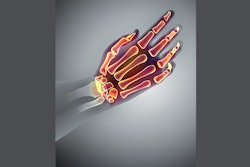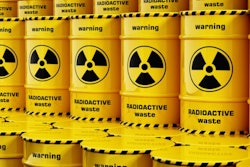
 Paul Lachance, President, Smartware Group
Paul Lachance, President, Smartware GroupIn process manufacturing, recalls are a more common theme than they should be. Product recalls, ranging from dog food to applesauce, cost companies billions a year. But while salmonella and E. coli contamination get the most airtime, recalls due to contamination with foreign objects from broken machine parts are also a major issue. Sanderson Farms and Kellogg, for example, have both weathered high-profile recalls due to industrial debris from faulty machinery making its way into food products.
So how can food manufacturers curb these costly and reputation-sinking blunders? Step one is to look toward the systems that help maintain the assets and equipment that produce your food and beverages: cloud-based computerized maintenance management system (CMMS) and barcode technology.
As part of a CMMS platform, the enablement of barcode and QR code scanning can introduce more accurate, timely and organized data into the food manufacturing setting — helping to identify problems sooner by tracking each piece of equipment and each piece of inventory by region and supplier. While seemingly a simple innovation, it could save manufacturers millions. But even with such game-changing benefits, overall CMMS adoption is still relatively low — almost half of manufacturers still aren’t using the technology.
If you aren’t using a CMMS integrated with barcode and QR code scanning capabilities, you’re missing out on powerful solutions that can prevent product recalls stemming from machinery mishaps:
Reduce Human Errors
Barcoding used in conjunction with a CMMS can help prevent the possibility of some recalls entirely by removing the potential for error as a result of inaccurate or overlooked data entries. Missed preventive maintenance (PM) is one such example in which this error can contribute to product recalls. If a piece of equipment fails to receive its scheduled PM — or the scheduling never occurs — it may be the direct or indirect cause of a future recall.
But by using an automated barcode system with CMMS, manufacturers can insulate against the human errors that occur when relying on manual processes. Barcoded assets and equipment can be scanned to pull up the next PM, current condition or status, and related safety procedures and inspections. Likewise, spare parts availability may be tracked and managed through barcoded CMMS inventory. CMMS-enabled barcoding can also reduce the need for manual data input, preventing the inaccuracies that can snowball into larger problems.
Companies like Accusoft provide cross-platform toolkits that allow users to read a variety of barcodes and incorporate 1D and 2D barcodes to ensure accuracy even in the case of part or machine damage. And they can also offset misprinted barcodes.
Monitor Equipment 24/7 to Prevent Health Hazards
Using a CMMS integrated with asset monitoring systems to monitor equipment can enable a predictive maintenance (PdM) approach that reduces or completely eliminates the reliance on calendar-based checks. These time-based checkpoints are often responsible for missing critical mistakes.
For example, IoT sensors connected to machinery generate live asset data. These streams of data can be configured to trigger CMMS work orders or e-mail alerts of machine events, such as equipment malfunctions or temperature changes, that could hinder sanitation during food processing. Staff can then address problems immediately, before they lead to a damaging widespread recall.
Limit the Scope and Minimize Damage of Recalls that Occur
Unfortunately, the numerous factors that lead to product recalls can be difficult to avoid entirely, so manufacturers need a plan for mistakes that slip through the cracks. Fortunately, the right barcoding technology can vastly limit the scope of a recall by providing more accurate information about where issues or malfunctions occurred and which products they affected.
Using cloud-based barcoding technology, manufacturers can trace a tainted batch back to a specific supplier and the specific machine that processed it — empowering manufacturers to pinpoint which batches were affected and when to alert consumers accordingly. Rather than issuing a total recall of products, manufacturers can elect to recall only those affected and mitigate the financial and reputational damage to follow. While a recall is never ideal, incidents can be better handled with the right technology and information.
Product recalls are a nightmare for process manufacturers, and they can cause long-term or even permanent damage to a brand’s reputation. But by enforcing a culture of preventive maintenance — enabled by CMMS coupled with automated barcoding technology — manufacturers can eliminate the issues that lead to recalls entirely, avoiding the financial and reputational costs they entail.






















